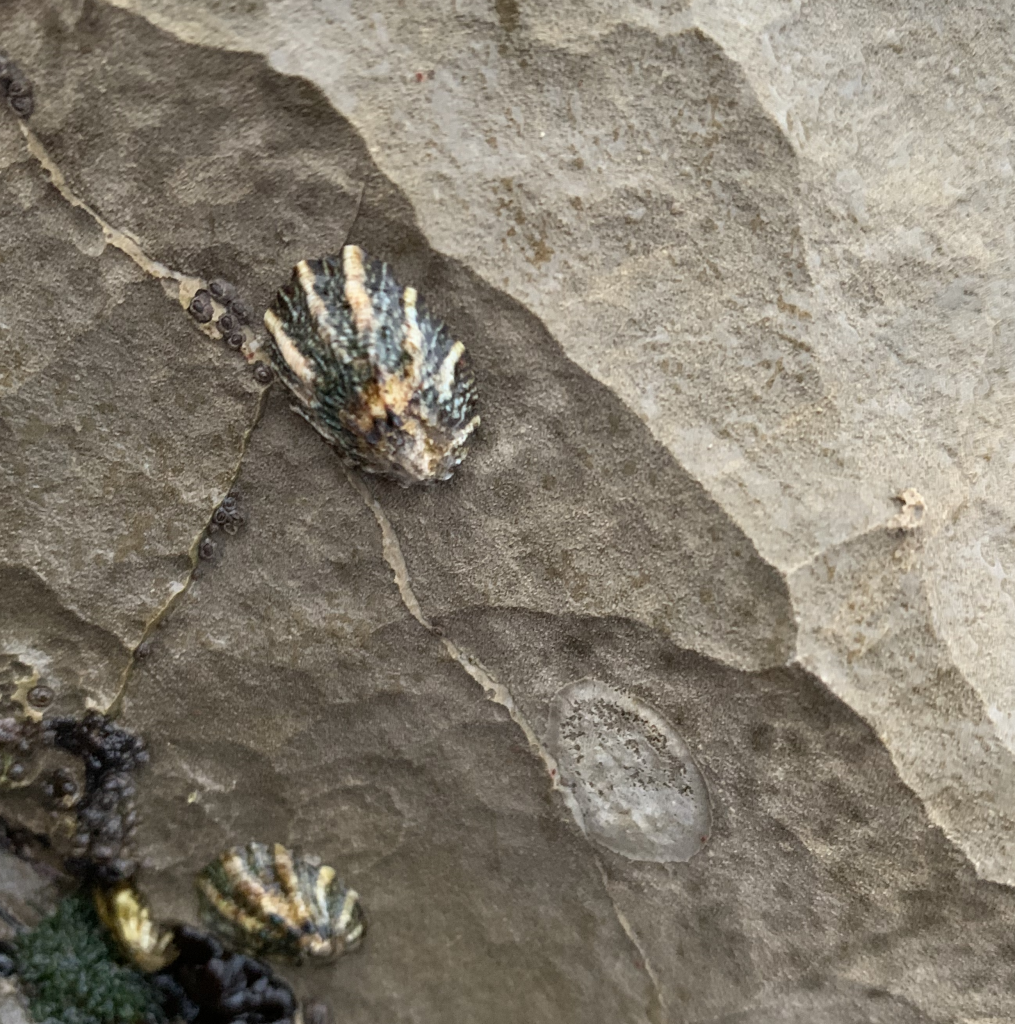Project: The Marine Networks (MariNet) Consortium
Taxon: Panulirus interruptus, Semicossyphus pulcher, Mytilus californianus, Tetraclita rubescens, Lottia scabra, Anthopleura sola, Megalorchestia californiana, Tivela stultorum, Pisaster brevispinus, Metacarcinus magister
People: Rachael Bay, UC Davis; Mike Dawson, UC Merced; Paul Barber, UC Los Angeles; Giacomo Bernardi, UC Santa Cruz; Brendan Cornwell, Stanford; Mark Carr, US Santa Cruz; Rick Grosberg, UC Davis; Jenifer Dugan, UC Santa Barbara; David Jacobs, UC Los Angeles; Peter Raimondi, UC Santa Cruz; Kaustuv Roy, UC San Diego; Cascade Sorte, UC Irvine; Regina Wetzer, NHM and USC; Lisa Paggeot, UC Merced; Melissa DeBiasse, UC Merced. Funding: California Conservation Genomics Project (CCGP)
Place: Northeastern Pacific
Synopsis: Marine ecosystems are experiencing unprecedented environmental change (Oliver et al. 2018), which has already resulted in widespread shifts in species distributions and patterns of connectivity (e.g. Sanford et al. 2019). Many marine algae, invertebrates, and vertebrates exist within well-characterized networks of ecological interactions (e.g. Burt et al. 2018). Reflecting the importance of these multi-species associations on population and ecosystem dynamics, and the goal of the CCGP, we proposed a synthetic “community genomic” analysis of ten species. This project will rewrite our understanding of marine biogeographic patterns and processes in coastal California by providing fundamental insights into spatial patterns of genomic diversity, population connectivity, and responses to abiotic and biotic environmental variation at the level of marine ecosystems.
This project brings together a collaborative of 13 investigators from across California, drawing on the breadth of taxonomic expertise to produce an understanding of genomic diversity that scales from individuals to ecosystems. Coast-wide, we will reveal hotspots of genetic diversity, connectivity, and species-associations that shape population dynamics and ecosystems along the California coast. We include species that represent the ecological, life history, and phylogenetic diversity of California invertebrates, including commercially important species (such as spiny lobster, Dungeness crab), and indicator species (such as beach hoppers, rough limpet). Our goal is to provide as near an holistic description of California nearshore marine life as possible.
By drawing a new “community genomic” map of coastal California marine biodiversity we will highlight patterns of diversity and connectivity not evident in analyses of individual species. This will enable us to investigate genomic indicators of species risk (Bay et al. 2018) and cumulatively assess “community genomic” indicators of ecosystem resilience, which can become a cornerstone in the design and function of the California Marine Protected Areas Network and benefit national parks and seashores. It will also help explain long-term genetic trajectories during multi-decadal warming trends (Dawson et al. 2010), and establish a baseline—albeit already shifted from the 1970s—and mechanism for understanding future ecosystem responses.
Proposed target species: Species in this consortium proposal (see above links) provide a novel “community genomic” perspective by filling important gaps in the representation of ecologies, habitats, taxonomy and species of importance, thus enabling a synthetic picture of processes that impact coastal ecosystems. We chose 10 target species to (1) provide a representative picture of coastal processes influencing patterns of genomic diversity and connectivity, (2) represent the major coastal shallow-water marine habitats of California, (3) complete a suite of key commercially important species, and (4) complete the list of major keystone species.
The characteristics and justifications for each species are provided in the above links. For example, changes in ocean temperatures are considered to be a major driver of dynamics in the ranges of coastal marine organisms (Sanford et al. 2019). Our most complete understanding of community dynamics comes from the long-term PISCO surveys, which do not include genetic data. We will therefore sample a range of organisms (see above) to understand the community genomic impacts of changing climate at range limits (T. rubescens) and ecotones (L. scabra). Moreover these new studies will be tied into an existing study of the keystone species Pisaster ochraceus and its response to sea star wasting disease (Schiebelhut et al. 2018), making the product much greater than the sum of the parts. Rocky shores are often physically adjacent to and ecologically connected with kelp forests, which likewise have been impacted directly or indirectly by marine heatwaves and sea star wasting disease. Here, we leverage interactions among independent CCGP proposals on kelp and urchins and abalone (Orland et al.), by proposing a missing predator of urchins—the commercially and recreationally fished, IUCN “vulnerable” California Sheephead (Semicossyphus pulcher; Cornish & Dormeier 2006)—to build the ‘community genomic’ perspective. For sandy shores, we target Pismo clam (an important recreational fishery in California) and talitrids (key detritivores consuming wrack subsidies from adjacent habitats including kelp forests and seagrass meadows) whose populations also are highly vulnerable to human impacts and climate change. Subtidally on soft bottoms we target the giant spiny sea star (Pisaster brevispinus), which also was affected by sea star wasting disease, establishing an intriguing ecological genomic omparison. Other soft bottom and/or commercially important species are Dungeness crab (Metacarcinus magister) and spiny lobster (Panulirus interruptus); the latter ecologically connects kelp forest with surfgrass (Phyllospadix) meadows—an ecosystem at the interface of sandy and rock shores. Simultaneous analysis of individual species and links between species and ecosystems is clearly essential for informing coastal management strategies for the State of California.
Photo credits: Tetraclita rubescens by Michael N Dawson. Pisaster brevispinus by Jerry Kirkhart, at Hazard Reef near Morro Bay, CA, https://creativecommons.org/licenses/by/4.0/. …










